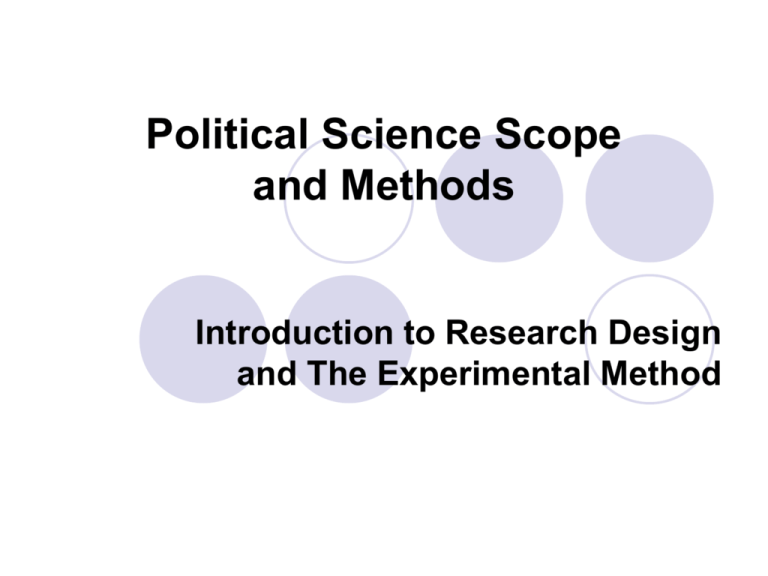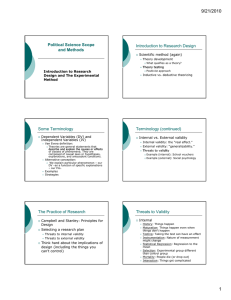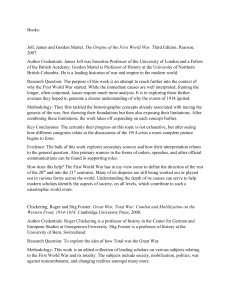Political Science Scope and Methods
advertisement

Political Science Scope and Methods Introduction to Research Design and The Experimental Method Introduction to Research Design Scientific method (again) Theory development What qualifies as a theory? Van Evera’s view Theory testing Van Evera: Positivist approach Inductive vs. deductive theorizing Some Terminology Dependent Variables (DV) and Independent Variables (IV) Van Evera definition Alternative conception: We explain particular phenomenon – our DV – as a function of specific explanations – our IVs. Examples Strategies Terminology (continued) Internal vs. External validity Internal validity: the “real effect.” External validity: “generalizability.” Threats to validity Example (internal): School vouchers Example (external): Social psychology Threats to Validity Internal History: Things happen Maturation: Things happen even when things don’t happen Testing: Taking the test can have an effect Instrumentation: Nature of measurement might change Statistical Regression: Regression to the mean Selection: Experimental group different than control group Mortality: People die (or drop out) Interaction: Things get complicated Threats to Validity External Interaction of Test and X: Taking test changes effect of treatment Interaction of Selection and X: Both control and experimental group are different Reactive Arrangements: Experimental setting is artificial Bottom Line (76 pages of Campbell and Stanley later): Be Careful! Testing theories Van Evera: 2 ways to test theories: Experimentation Observation Case studies “Large N” (statistical) analysis Experiments Experimentation: Lab experiments Effect of negative advertisements (Ansolabehere) Study of political cognition (Berinsky and Kinder) Field experiments Effect of canvassing, telephone calls, and mailing on turnout (Green and Gerber) Effectiveness of “franking” – baby books and ballots (Cover and Brumberg) Survey Experiments Power of stereotypes (Berinsky and Mendelberg) Effect of introducing politically relevant knowledge (Berinsky) The Practice of Experimentation Campbell and Stanley: The hard sell Limitation of experiments Experimental work as the plutonic ideal Experiments are about control Payoff in causal inference Maximize internal validity (if do them correctly) Random Assignment Note: Random assignment random selection Other Concerns Construct validity Why does the treatment work? Is the treatment what we say it is? Experiments vs. Quasi Experiments Experiments: C&S – p.8: If you use random assignment, you don’t need to worry about internal validity Quasi-Experiments: C&S – p. 40,56 – things are not so neat Specific threats to worry about Designs that control for all threats to validity might be hard to operationalize



